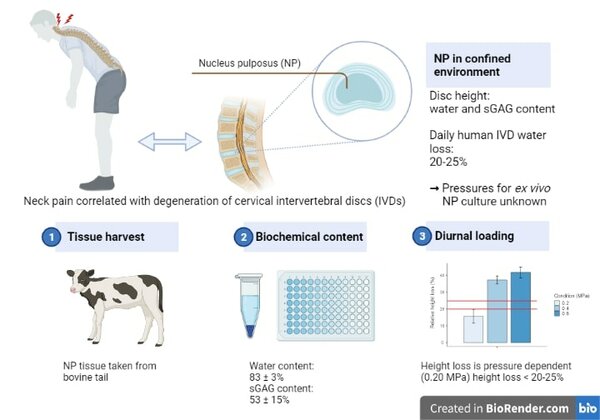
Worldwide, neck pain is a significant health problem and is associated with cervical intervertebral disc degeneration (IVDD). The IVDs can maintain disc height due to the high sulfated glycosaminoglycan (sGAG) content in the nucleus pulposus (NP). With IVDD, the sGAG content is decreased, leading to a reduction in fixed charge density and swelling pressure. An NP explant model can be used to analyze the initial stage of IVDD, but NP explants lose structure in cultivation in free-swelling conditions. During daily activities, the pressure on the NP varies. Therefore, this study aimed to determine the diurnal loading pressures for a bovine NP ex vivo culture to match the physiological pressure for height change and fluid flow in human cervical IVDs. Young healthy coccygeal NP explants were loaded in a bioreactor chamber for one diurnal loading cycle, using a low, intermediate, and high active-phase pressure. The NP explants were analyzed on biochemical content and via a stress relaxation test and height measurements. Only the height loss with the lowest active-phase pressure (0.20 MPa) was smaller than the physiological range of daily human IVD water loss of 20 to 25%. This study revealed that displacement, leading to more fluid flow, is pressure dependent.